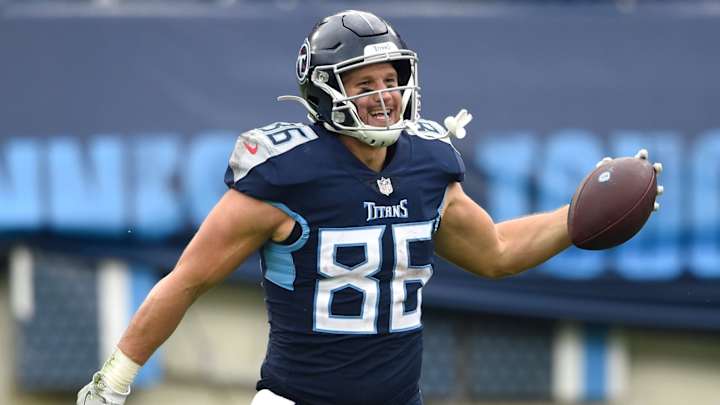These Titans Suddenly Positioned For Bigger Roles

At the end of training camp in 1999, the Tennessee Titans released Darryll Lewis.
The veteran cornerback was 30 years old at the time and led the team – then the Oilers – in interceptions each of the previous five seasons. He had not missed a game since 1993 and had 27 career picks, which is still tied for fourth in franchise history.
It was not that his performance had slipped. Instead, he was pushed aside to make room for Samari Rolle, a second-round draft pick in 1998.
When asked by a local reporter about the move, Lewis graciously offered a simple assessment: “He’s ready.”
No doubt, Kenny Vaccaro would say the same thing this year about Amani Hooker. On Wednesday the Titans released Vaccaro, their starting strong safety for the past three seasons, in a decision motivated by the need to free up salary cap space. It also was to create opportunity for Hooker, a fourth-round pick in 2019 who in 2020 tied for the team lead in interceptions with four and was among the Titans’ top 10 tacklers despite the fact that he played just 42 percent of the defensive snaps.
Hooker is now the starter alongside free safety Kevin Byard, and one of several players suddenly thrust into a more prominent role to due to roster decisions ahead of the new contract year which begins next Wednesday.
Rolle, in fact, was ready when his time arrived. He led Tennessee in interceptions four times in five seasons (1999-03) and was a Pro Bowler and first-team All-Pro in 2000.
Franchise officials hope Hooker is equally prepared. The same is true – to some degree – for these players:
• Anthony Firkser, tight end: Undrafted out of Harvard in 2017, Firkser has spent the past three seasons with Tennessee and is the only one of last year’s four tight ends who is not headed for unrestricted free agency after franchise officials opted not to use the franchise tag on Jonnu Smith. The Titans are expected to extend the tender offer necessary to retain the restricted free agent’s rights, particularly after he set career-highs with 39 receptions and 387 receiving yards in 2020.
Not only is it possible that Firkser will be the only tight end who returns to the offense, he also will help the transition at slot receiver following the release of Adam Humphries. Firkser played at that spot some last season when an injury sidelined Humphries for eight of the final nine games.
• Kristian Fulton, cornerback: Things did not exactly go as planned for last year’s second-round pick. The idea was for him to be the slot cornerback, gain plenty of experience and grow from there. Instead, a knee injury and a stint on the COVID-19 reserve list limited him to six games played. He finished with 16 tackles, one interception and one sack but played just 18 percent of the snaps on defense.
Nonetheless, it is full speed ahead for Fulton following the release of cornerback Malcolm Butler, a move that opened up $10.2 million in cap space. Fulton is now the presumed starter opposite Adoreé Jackson and will be asked to offset the absence of Butler, who was one of the defense’s top performers in 2020.
• Cameron Batson, wide receiver/returner: A revelation as an undrafted rookie in 2018, Batson missed all of 2019 with an injury and spent time during the first two months of 2020 on the practice squad. Along the way, coaches have remarked often about his toughness and his ability to contribute as a punt and kickoff returner has made him a useful performer.
Batson will not be a featured member of the offense in 2021, but the decisions to cut Humphries and to allow Kalif Raymond to become a free agent certainly create the type of opportunity he has not had in the NFL. His best spot on the offense is as a slot receiver, where there currently is no one ahead of him. Plus, without Raymond, Batson is now the Titans’ best option in the return game.

David Boclair has covered the Tennessee Titans for multiple news outlets since 1998. He is award-winning journalist who has covered a wide range of topics in Middle Tennessee as well as Dallas-Fort Worth, where he worked for three different newspapers from 1987-96. As a student journalist at Southern Methodist University he covered the NCAA's decision to impose the so-called death penalty on the school's football program.
Follow BoclairSports